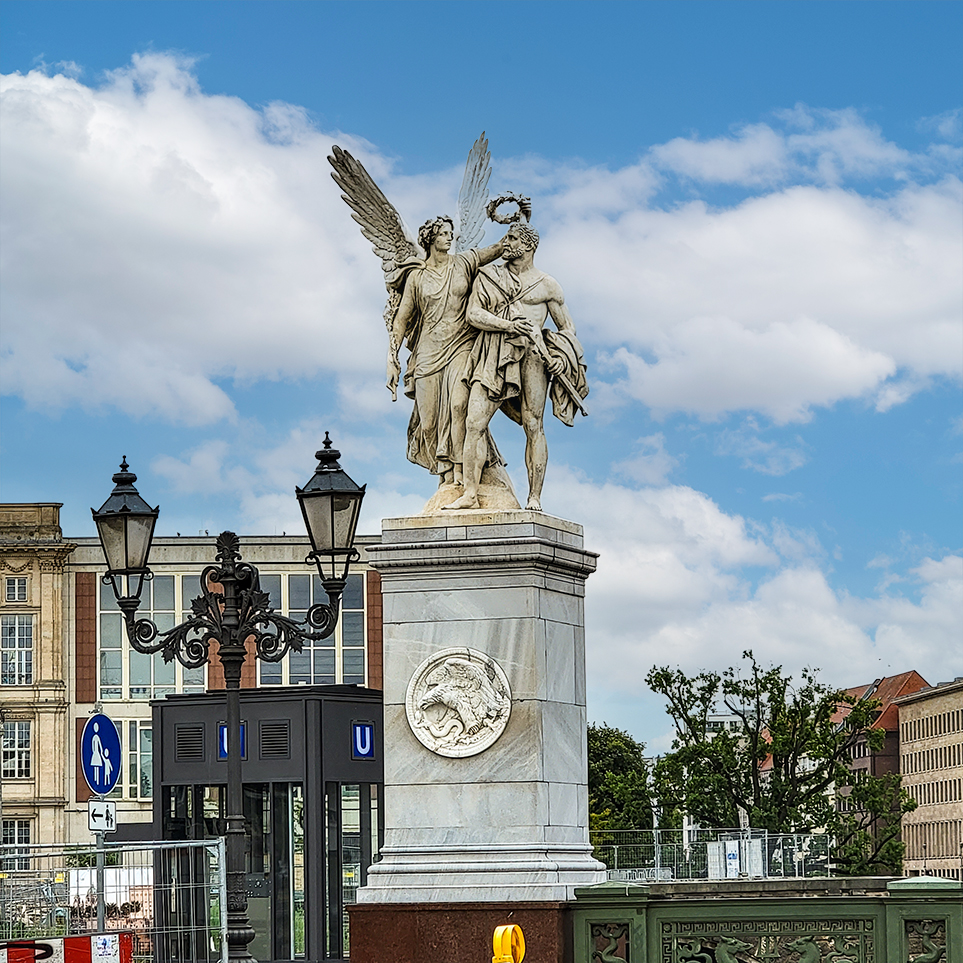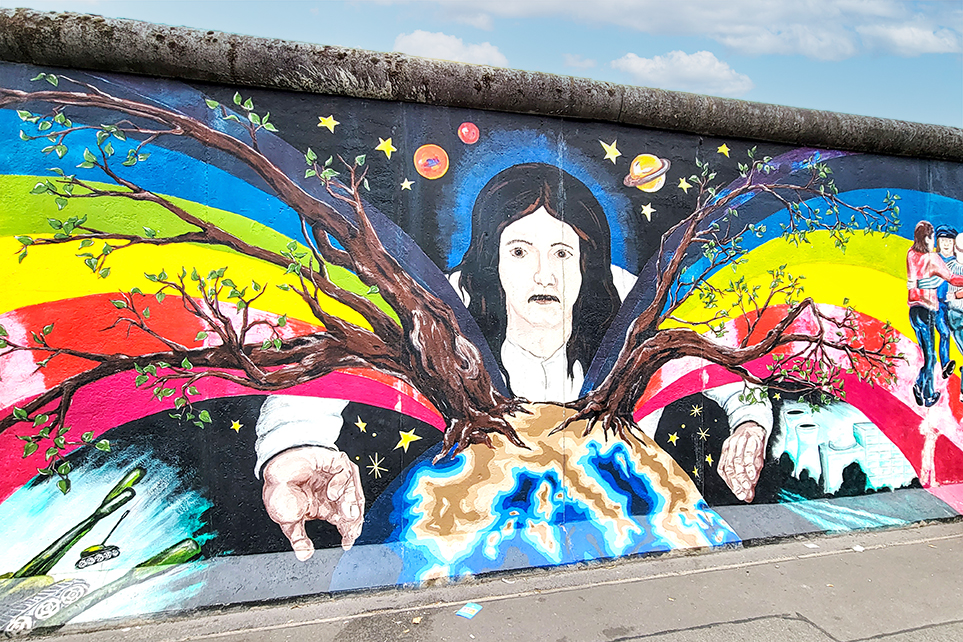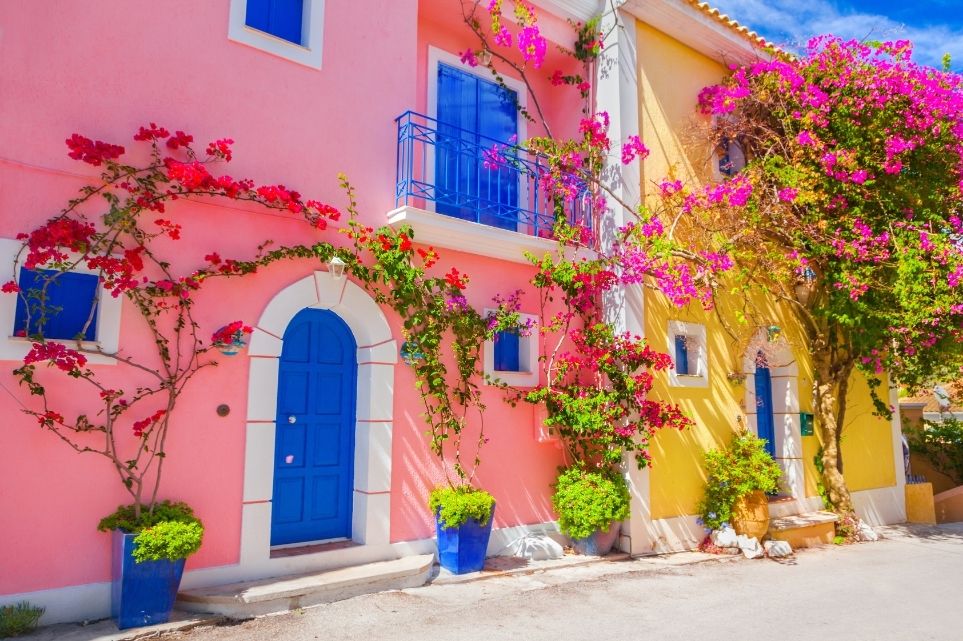
One city that we easily recognize due to the impact it has had in history is Berlin. Although Berlin has had a dramatic past, it is one of the most hipster, dynamic cities in the world!
We spent a weekend in Berlin, visiting our nephew, but we could have easily spent more than a couple of weeks in the city. Check out the best things to do in Berlin!
Reichstag (Parliament)
The Reichstag (Parliament building) is a picturesque building, a mixture of Renaissance, Baroque Revival, and Postmodern style. A must-see is the glass dome which is the most prominent tourist attraction.
Take a tour with an audio guide that explains more about the city of Berlin. Admission and audio guides are free! You need to register in advance either on the Reichstag website or across the street.
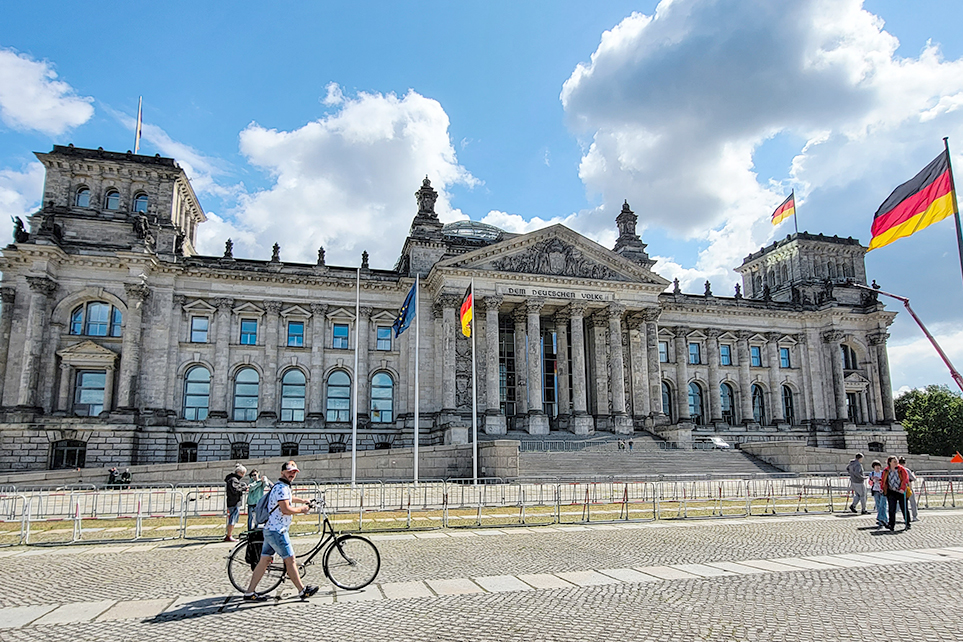
Sinti and Roma Memorial
Referred as “gypsies,” the Sinti and Roma Europeans suffered greatly as victims of Nazi persecution and genocide. Approximately 500,000 Sinti and Roma were persecuted and murdered during WWII by the Nazis.
The Memorial consists of a round water basin with a triangular stone stele at its center. The shape reflects all those imprisoned by Nazis, identified with different colored triangles that were on their prisoner clothing.
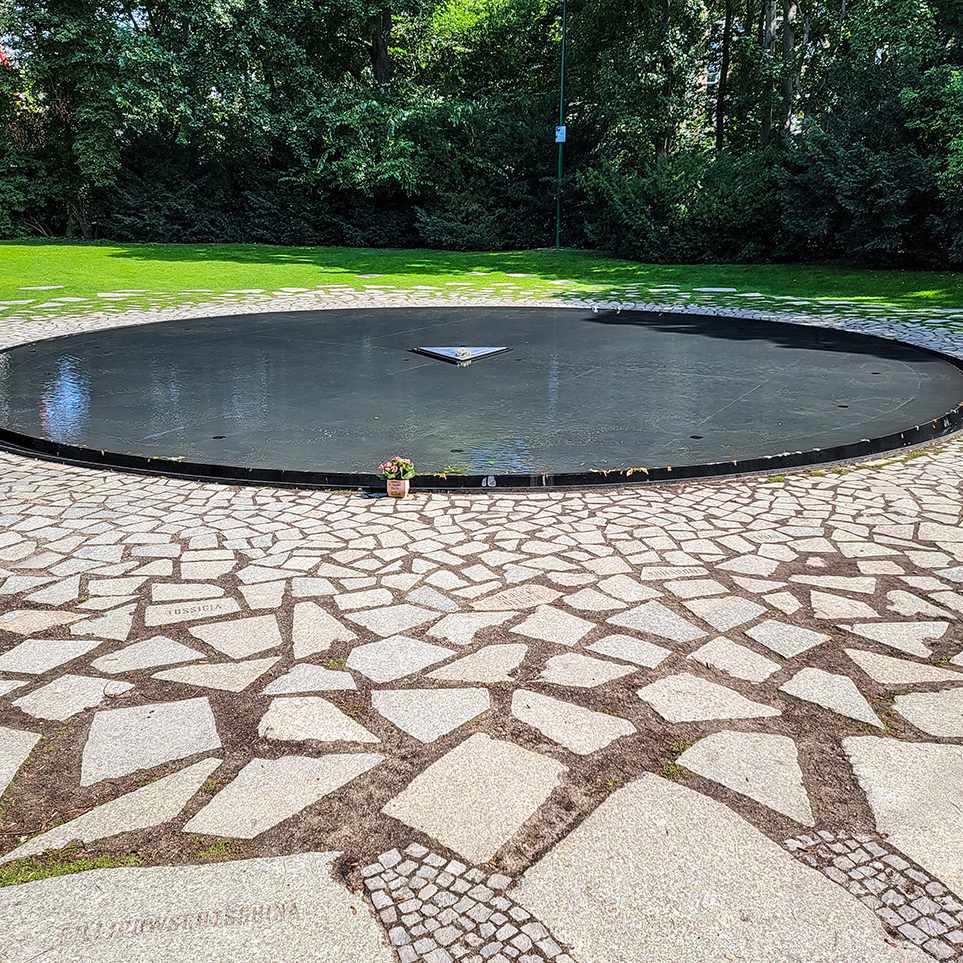
Red City Hall (Rotes Rathaus)
Earning its name from the façade made up of red bricks is the Governing mayor’s seat and the Senate of Berlin. Today you will find the Red City Hall used for exhibitions.
- Hours: Monday- Friday: 9:00 – 20:00
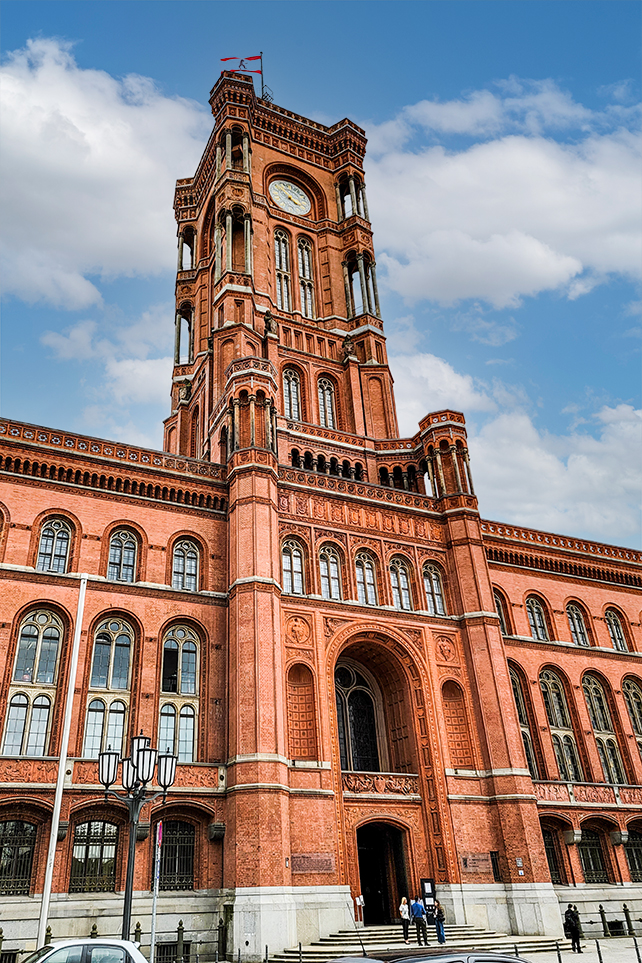
Brandenburg Gate
One of Berlin’s most famous monuments is the Brandenburg Gate, built between 1788 and 1791. After the construction of the Berlin Wall, the monument was accessible to those living in East Berlin or West Berlin. After the fall of the Wall in 1989, the Brandenburg Gate became a symbol of reunification.
It is also where President Reagan gave his speech in 1987: “Mr. Gorbachev, tear down this wall!”.
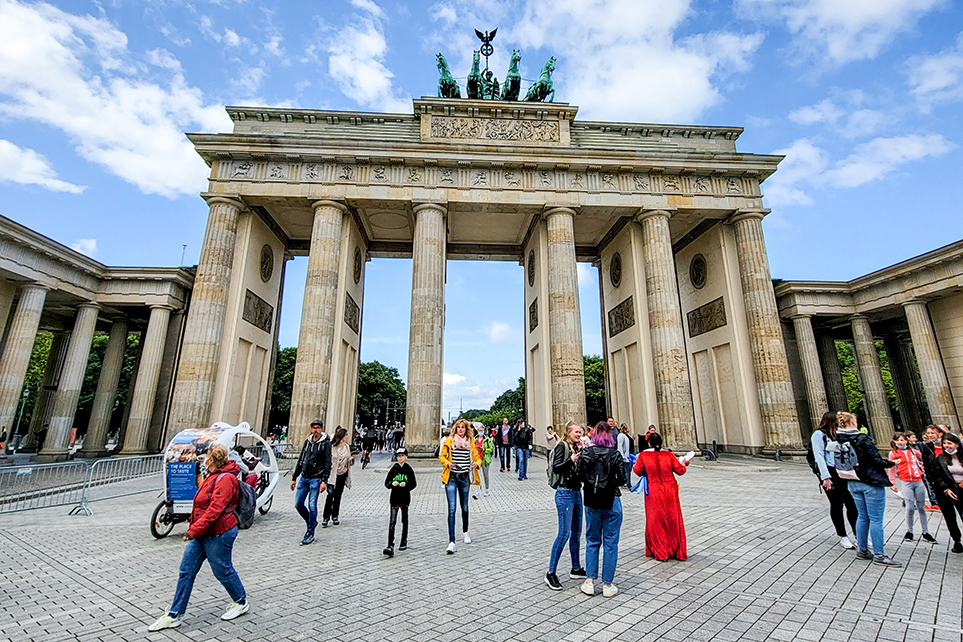
Memorial to the Murdered Jews of Europe
One of the most emotionally moving monuments to visit is the Memorial to the Murdered Jews of Europe, also called the Holocaust Memorial. Covering over 19,000 square meters are 2711 concrete slabs of various heights. As you walk through the maze, you have a sense of uncertainty, confusion, and darkness, as what Jews experienced.
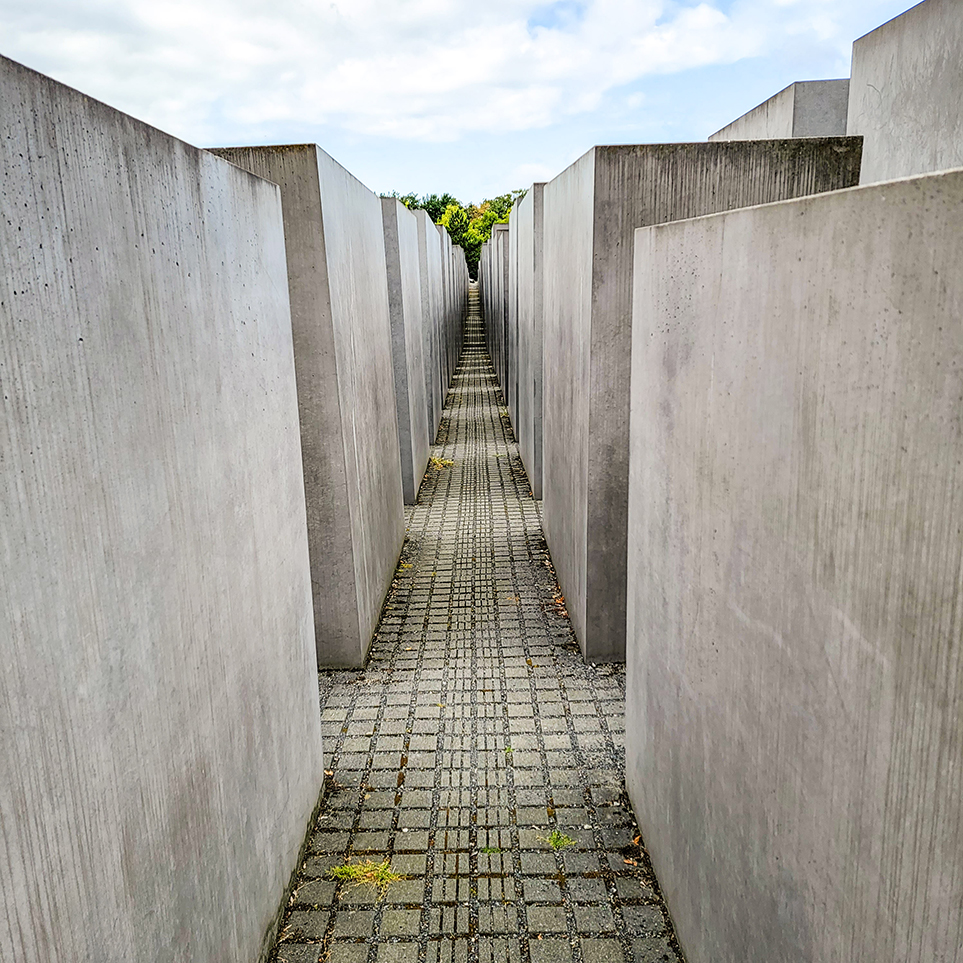
Checkpoint Charlie
Most of us have learned about Checkpoint Charlie by reading spy novels or watching movies like the Octopussy (a James Bond movie). Although it has become a Hollywood backdrop, Checkpoint Charlie has played a significant role in history.
Located on the corner of Friedrichstrasse and Zimmerstrasse is Checkpoint Charlie. It was the crossing point between East and West Berlin during the Cold War. Checkpoint Charlie comes from the NATO phonetic alphabet (Alpha, Bravo, Charlie). With two other border crossings taken: Alpha and Bravo, this point became the third checkpoint named “Charlie.”
Today, the checkpoint is more for tourists and photo-ops. However, Cattycorner to Checkpoint Charlie is BlackBox Cold War, a free information museum worth checking out.
- The Mauer Museum (Wall Museum) is nearby Checkpoint Charlie. Here you will see original pieces of the Wall, travel documents, an escape car, and much more
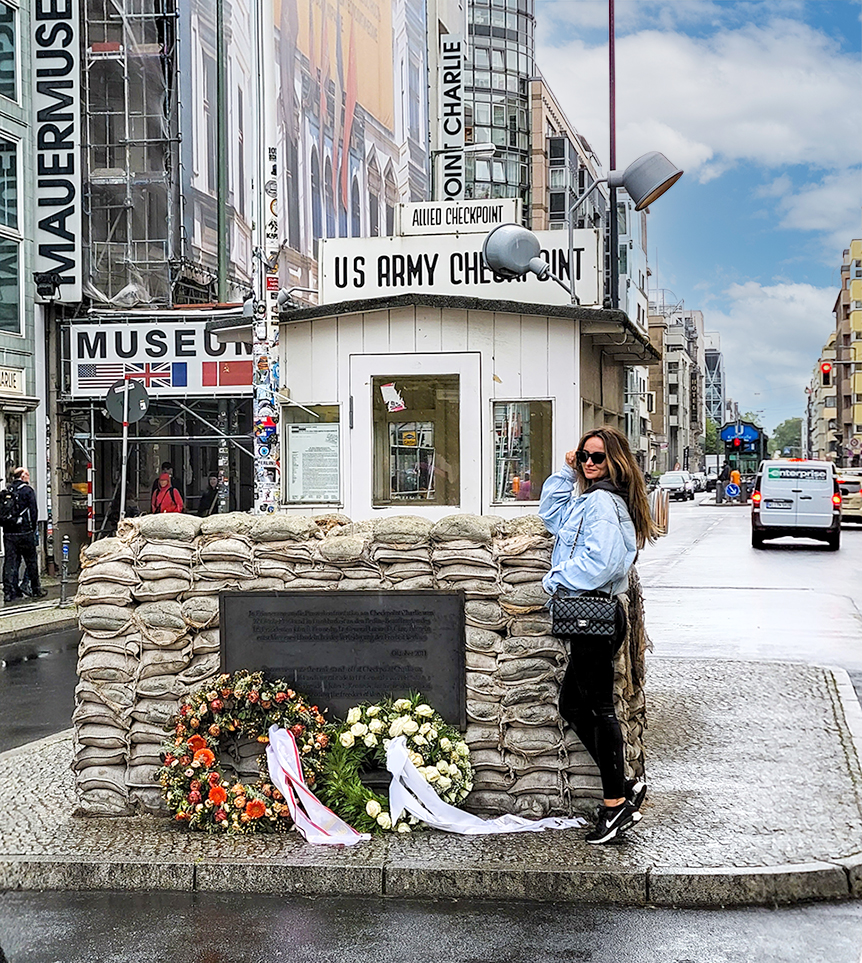
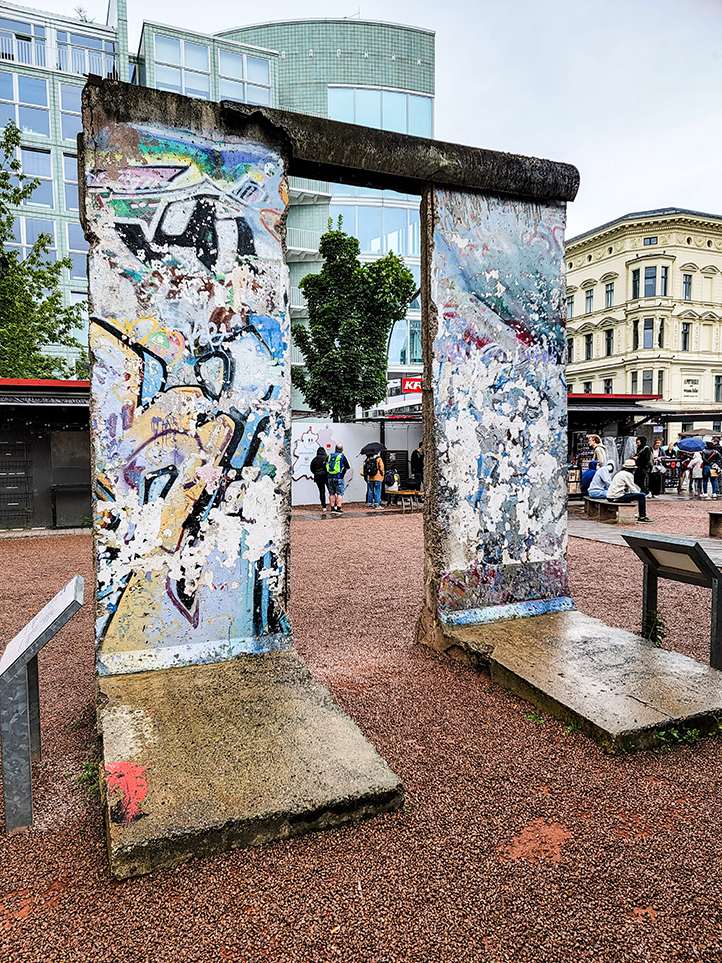
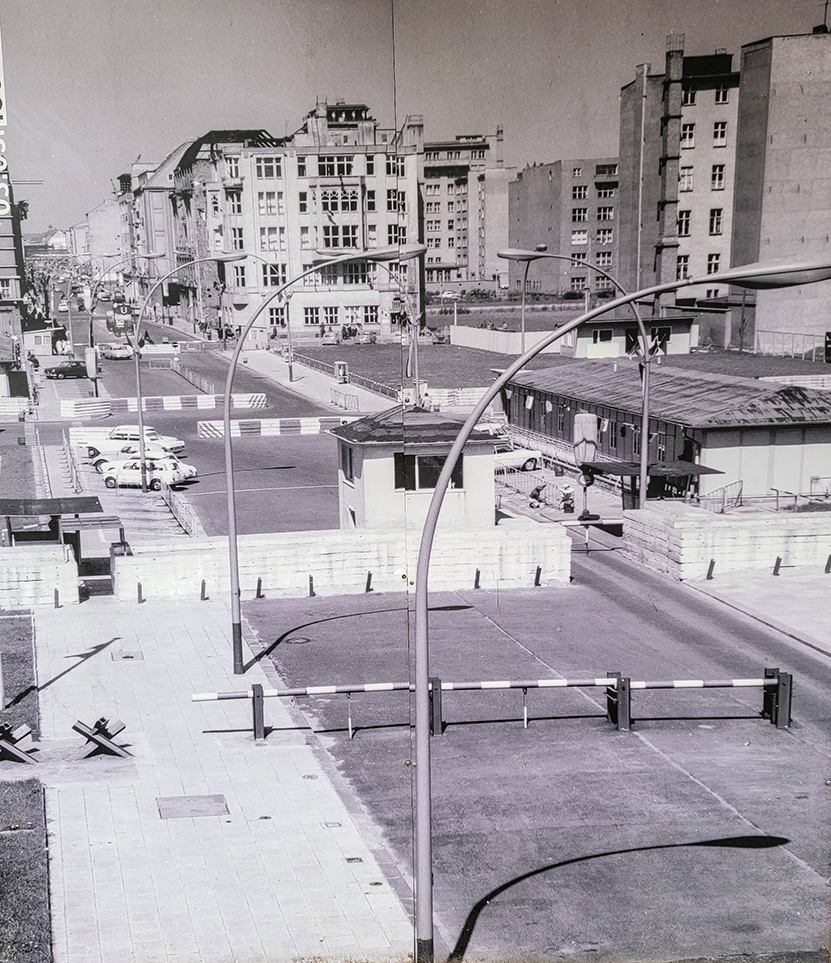
Gendarmenmarkt
Not far from our hotel is one of the most beautiful squares of Berlin, Gendarmenmarkt. Here you can find the New Church, the French Cathedral, and the Concert Hall.
The development of this area was for Huguenot refugees from France during the 17th century. You will find a French Protestant Church at one end of the square and a Lutheran Church at the opposite end.
These buildings are impressive, and you won’t want to miss them. This square was massively damaged during the war, but its reconstruction began in 1981, and it’s now so beautiful, it’s definitely worth a visit!
- The Concert Hall was closed at the time of my stay in Berlin. You can do a quick walkthrough free of charge or a guided tour for 3 EURO, lasting approximately 75 minutes (offered only on Saturdays at 13:00)
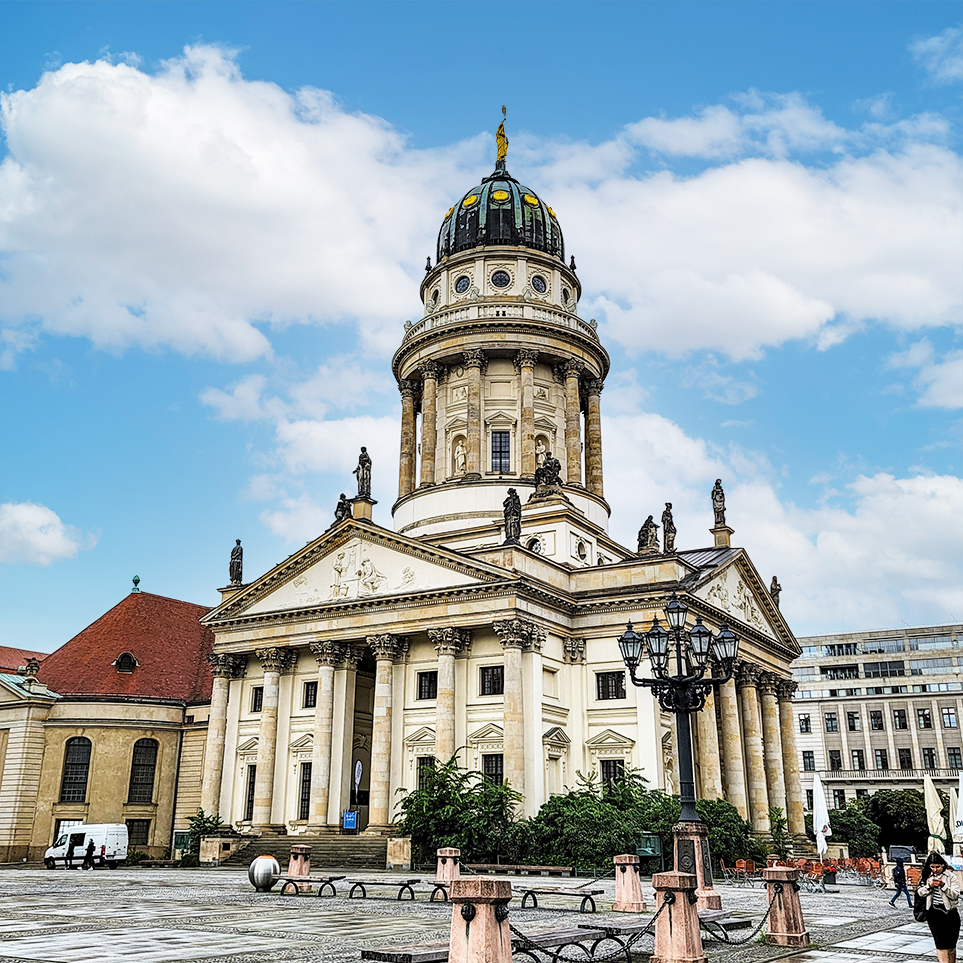
- The New Church (Deutscher Dom), built in the 18th century as a church, was home to Lutheran and Calvinist congregations. Unfortunately, suffering significant damage during WWII, the church was not reconstructed until 1988. Today, the church serves as a museum. Hours: Tuesday – Sunday from 10:00 – 18:00.

- The French Cathedral was built by the French Protestant community in 1705. Due to many Huguenots that fled Prussia. After the bombing of WWII, the church was left in ruble until 1981. The church offers services every Sunday 9;30 and 11:00) in French. Hours: Tuesday – Sunday from 12:00 – 17:00. To check out the panoramic view from the dome, you can climb 284 steps for a fantastic view!
Both churches are free to enter and look very similar to each other. Well worth visiting at least one of them!
-
- If you are interested in learning about the Huguenot people, visit the Huguenot Museum.
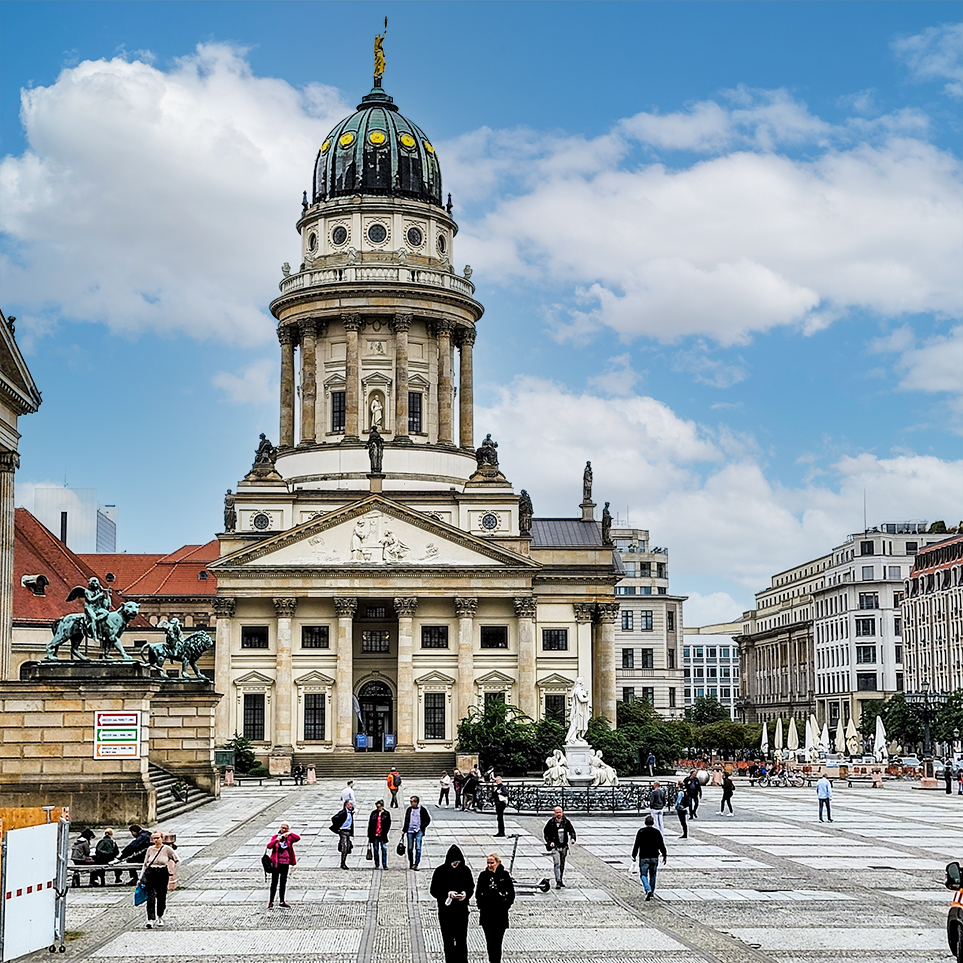
Berlin Cathedral – Berliner Dom
My favorite site because of its unique architecture was the Berlin Cathedral. This stunning structure was to outshine the St. Peter’s Basilica in Rome. It was built in the late 19th century by the former court and cathedral church of the Hohenzollern dynasty, Emperor Wilhelm II.
The Baroque-influenced Italian Renaissance style is ornate, and you can’t help but stare at the exterior forever. The interior is just as impressive, with one of the most important burial sites of the Hohenzollern Crypt, containing 90 entombments. The imperial staircase, the baptismal, and the wedding church are something to keep your eye on while touring the inside of the Berlin Cathedral.
- Hours: Monday – Friday: 10AM – 5PM, Saturday: 10AM – 4PM, Sunday: 12PM – 4PM.
- Admission: 7 EURO, the cathedral’s museum, the crypt, and the view from the dome (270 steps!) are included in this price. Audio-guided tours are available for 4 EURO.
- You can’t visit the church during the services.
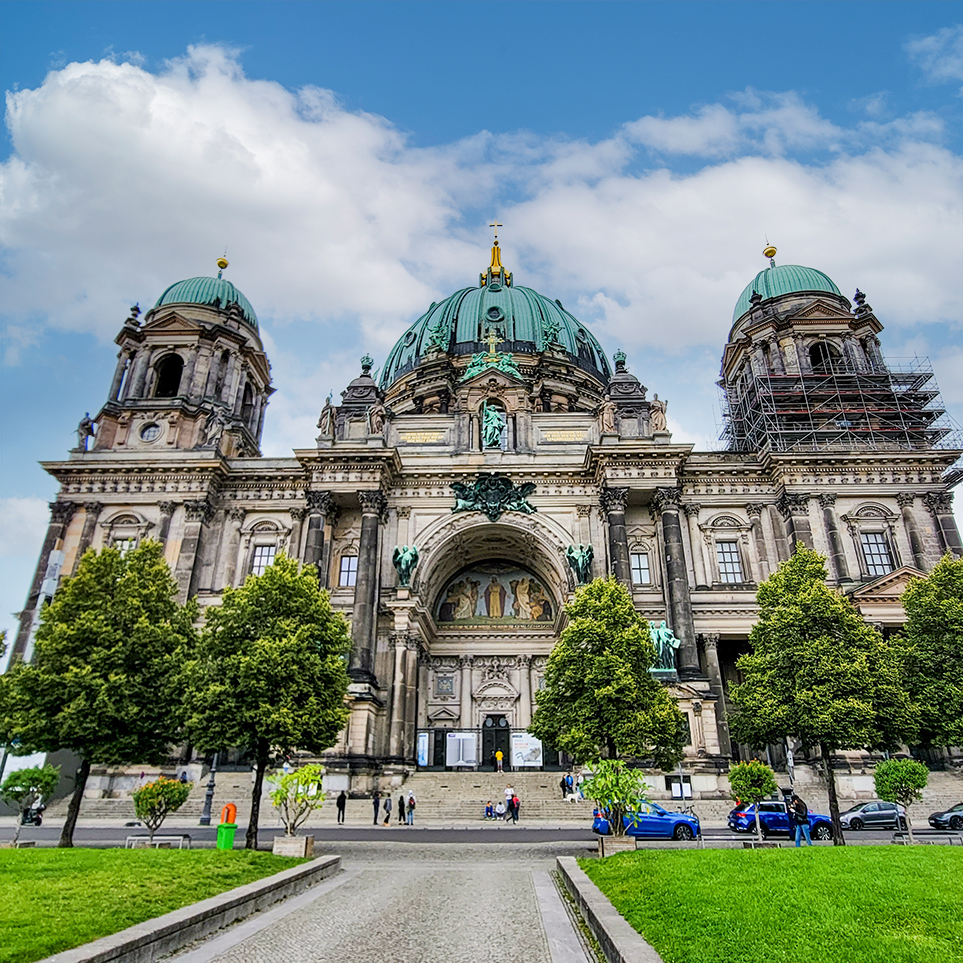
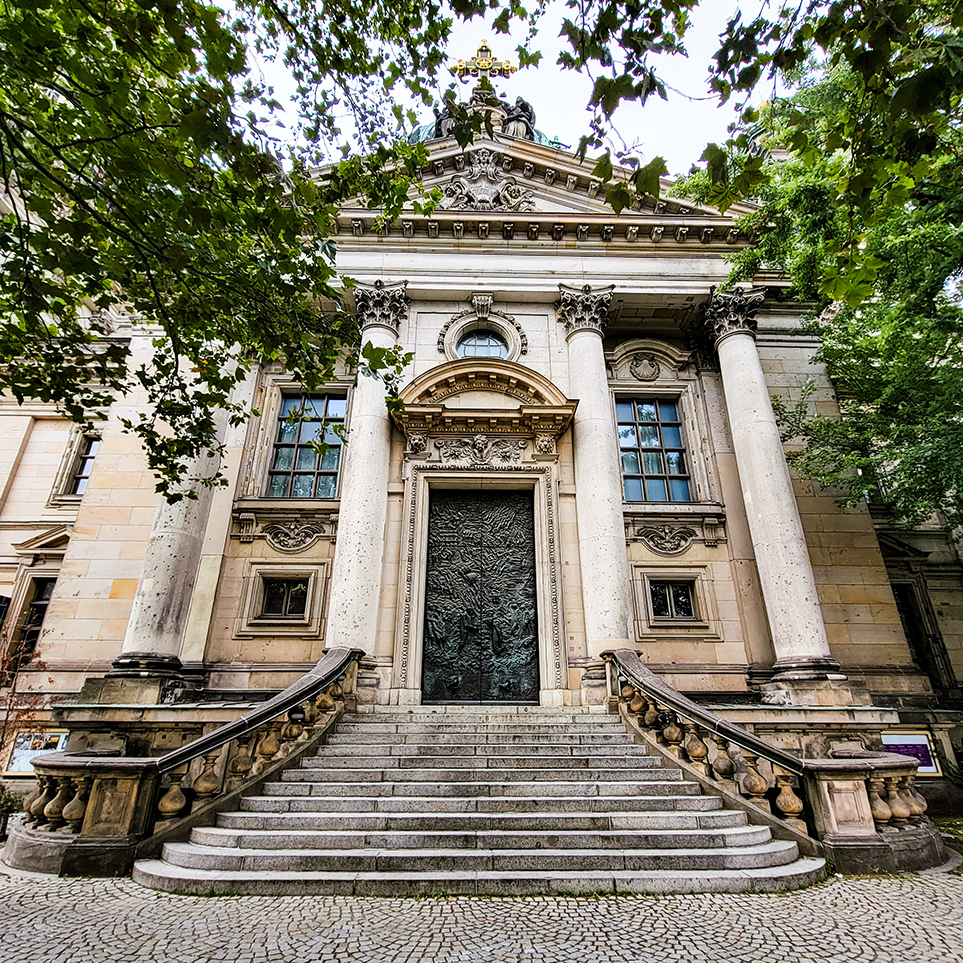
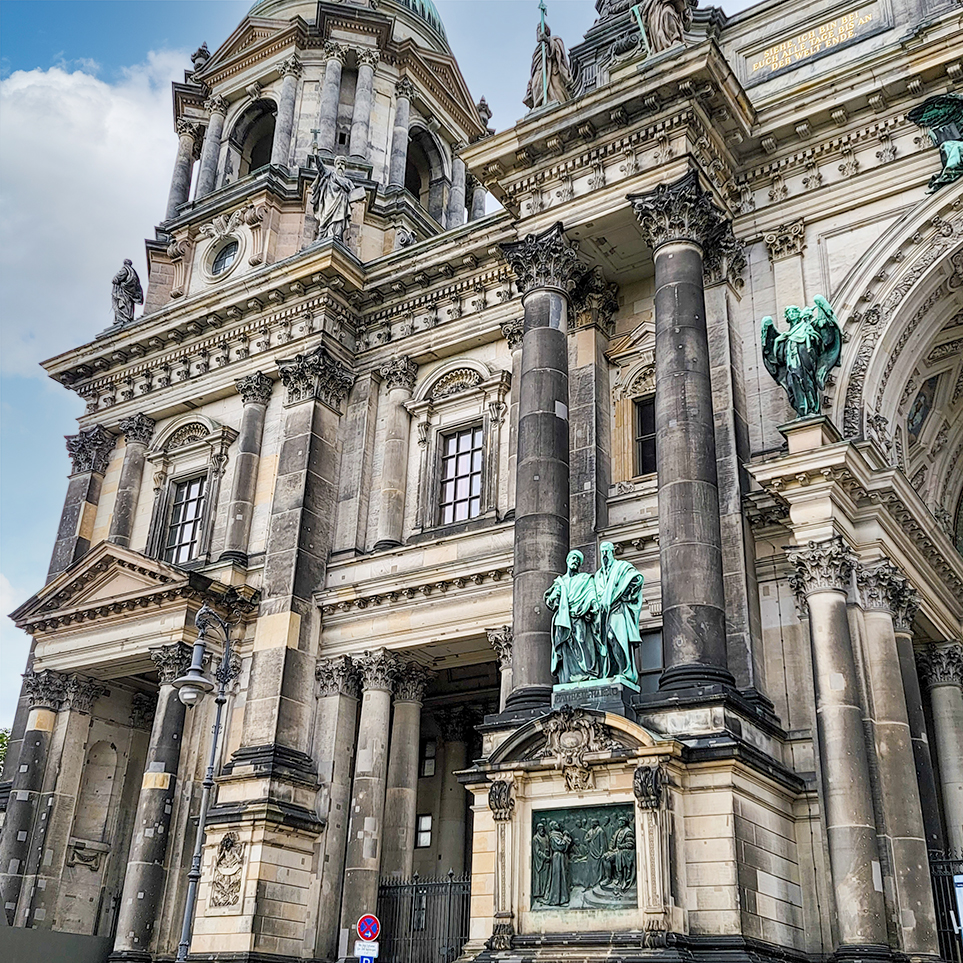
Castle (Schloss) Bridge
With decorative iron railing and eight statues, Castle Bridge is the most beautiful bridge in Berlin. The bridge survived WWI with only minor damage. Then, it was the Marx-Engels Bridge, but in 1991 the bridge returned to its original name.
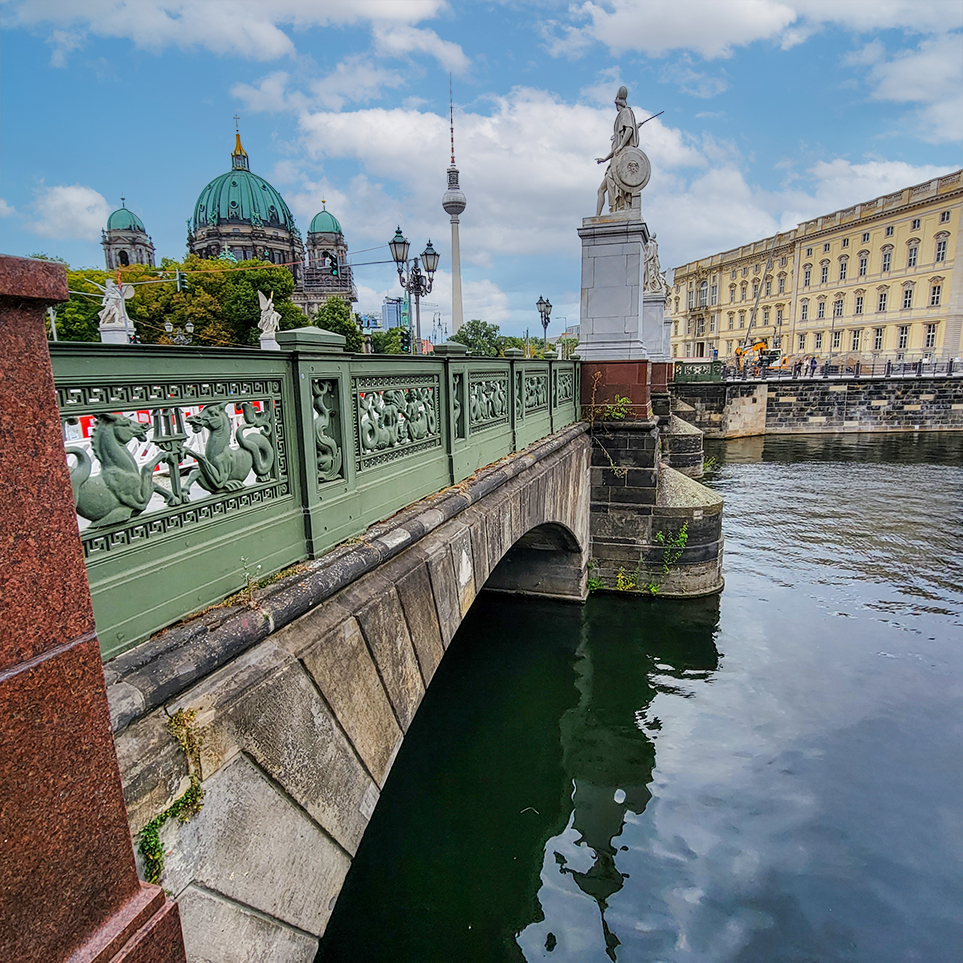
Museum Island
Spree Island is in the heart of Berlin, where five large Berlin museums were built under the Prussian rulers.
The Museum Island is a UNESCO World Heritage Site because of its extraordinary significance.
- Pergamon Museum: The museum shows artifacts from the Ancient East, Asia Minor, Egypt, Iran, and the Caucasus.
- Bode Museum: The museum showcases a coin collection, a Sculpture Gallery, and the Museum of Byzantine Art.
- Neues Museum: This museum has Egyptian and antique artifacts. A must if you like Egyptian art!
- Altes Museum (Old Museum): The museum offers sculptures and art from ancient Greece and Roman Empire.
- Alte Nationalgalerie: Shows art pieces in the Biedermeier, Classicist, Impressionist, Romantic, and early modern art styles.
- Hours: Tue/Wed/Fri/Sat/Sun 10 am – 6 pm, Thursday 10 am – 8 pm; museums are closed on Mondays.
- Admission: Best purchase is skip-the-line tickets for all five museums.
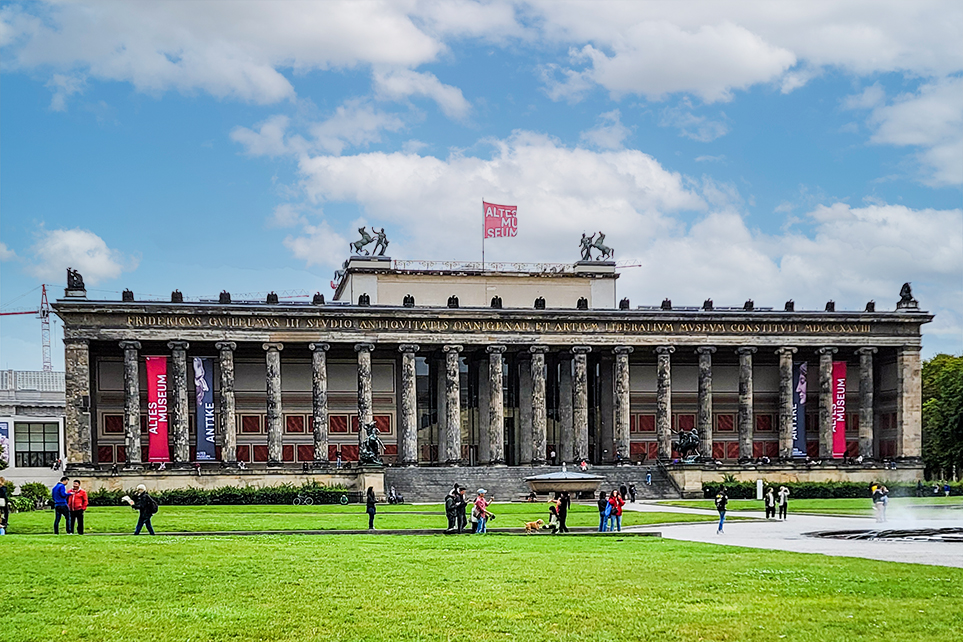
Schinkel’s Brick Church (Friedrichswerdersche Kirche)
While walking towards the Berlin Wall, we came upon this castle-like building called Schinkle’s Brick Church. Located near Werderscher Market is this romantic Gothic cathedral in 1821.
Today, it is home to some of the most elaborate sculptures from the Schinkel period. Visit the website for ticket options.
- Hours: 10:00 – 18:00
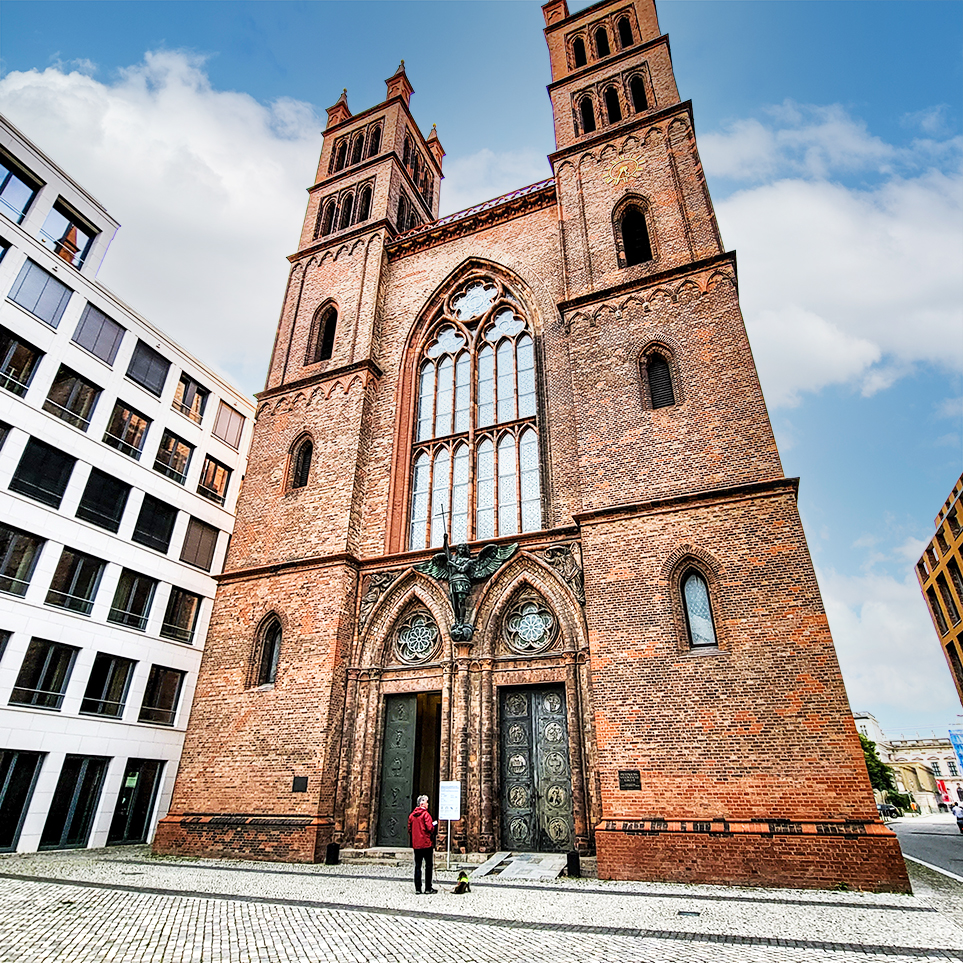
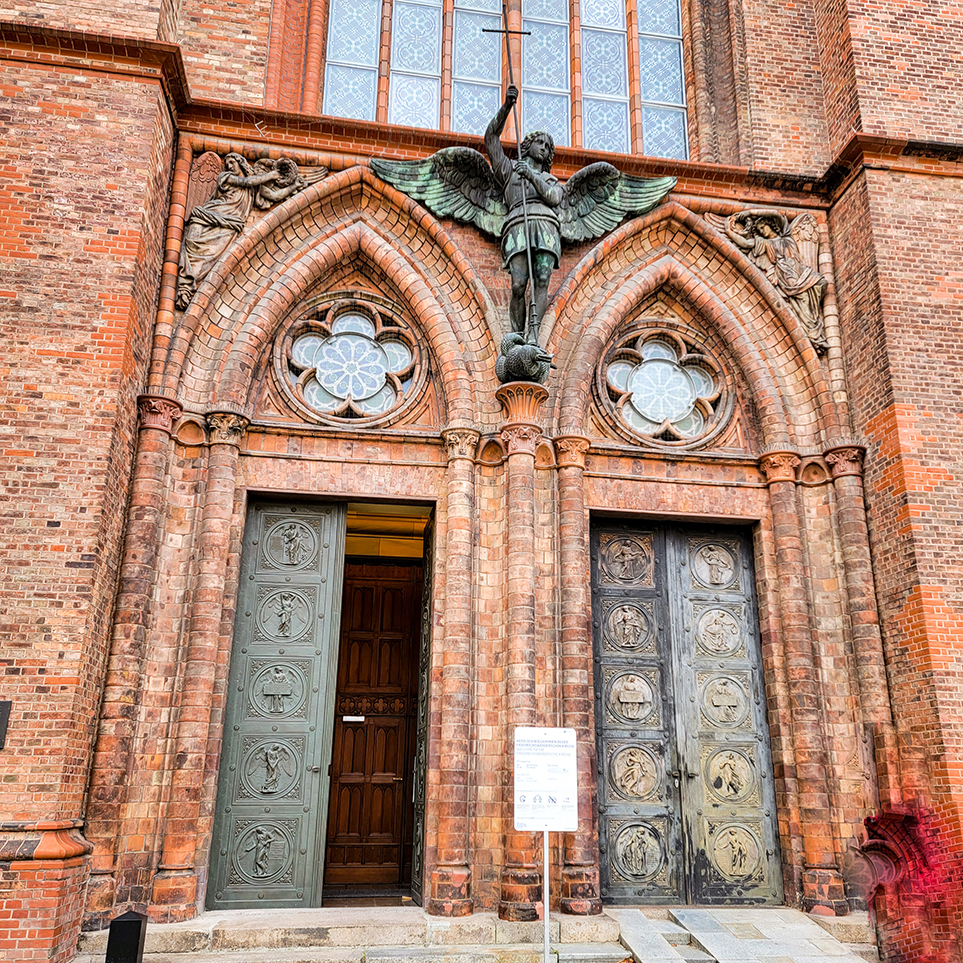
East Side Gallery – Berlin Wall
If you are like me, you will love to see the Berlin Wall. Not so much for its historical importance but because of the incredible murals.
Travelers from across the globe come to Berlin to catch a glimpse of the Berlin Wall. It is 1.3km of history with striking street art. This Wall is the longest surviving remains of the Berlin Wall.
In 1990, over 100 muralists from over 20 countries flew to Berlin to decorate this stretch of the Wall with colorful art paintings.
The most photographed piece of the Wall is the” Fraternal Kiss,” depicting a kiss between Russian leader Leonid Brezhnev and East Germany’s SED Party Chairman Erich Honecker. Under the image, it states, “My God, Help Me to Survive This Deadly Love.” A fraternal kiss is a special greeting between the politicians of Communist countries.
- Berlin Wall Bike Tour is another way to explore the Wall.
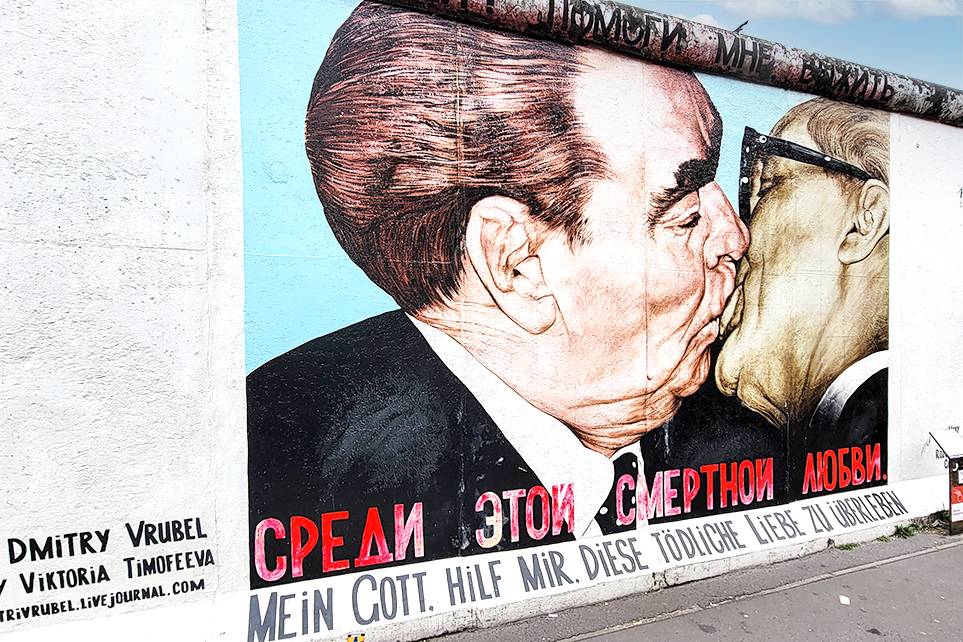
Oberbaum Bridge (Oberbaumbrucke)
Check out the double-decker Oberbaum Bridge near the Berlin Wall. Oberbaum Bridge was an important border crossing for pedestrians when Germany was divided.
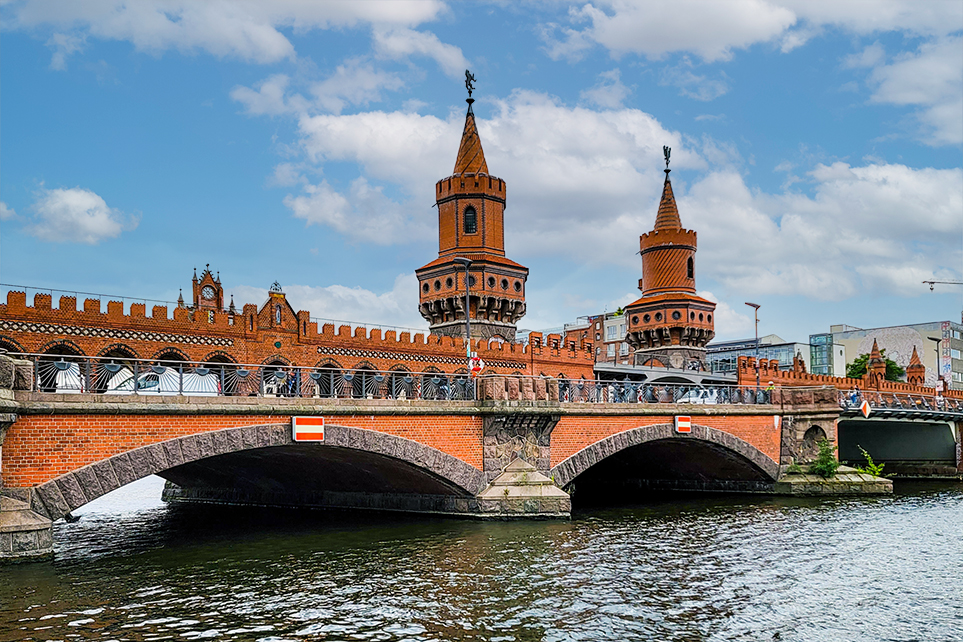
Soviet Memorial Treptow
The Soviet Memorial is to recognize over 80,000 Soviet soldiers that died during WWI fighting to capture Berlin. Here you will find over 700 graves of Soviet soldiers.
Within Berlin are three Soviet war memorials: one in Schönholzer Heide in Pankow, one in the Tiergarten, and this one in Treptow Park. The Treptow memorial is the biggest in Germany.
It is an elegantly designed park with tall, slender aspen trees that shimmer with the wind as you walk throughout the grounds.
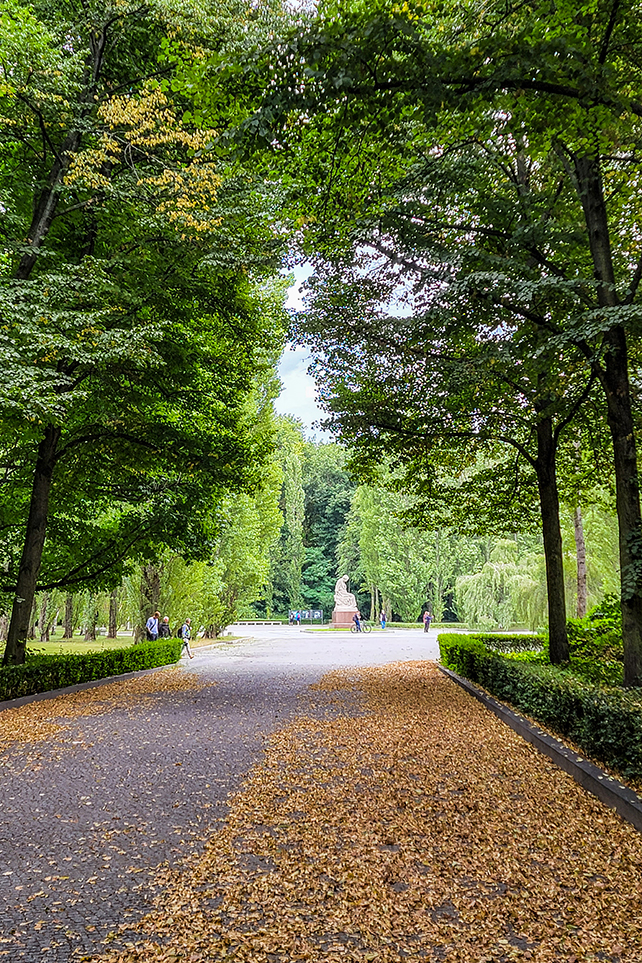
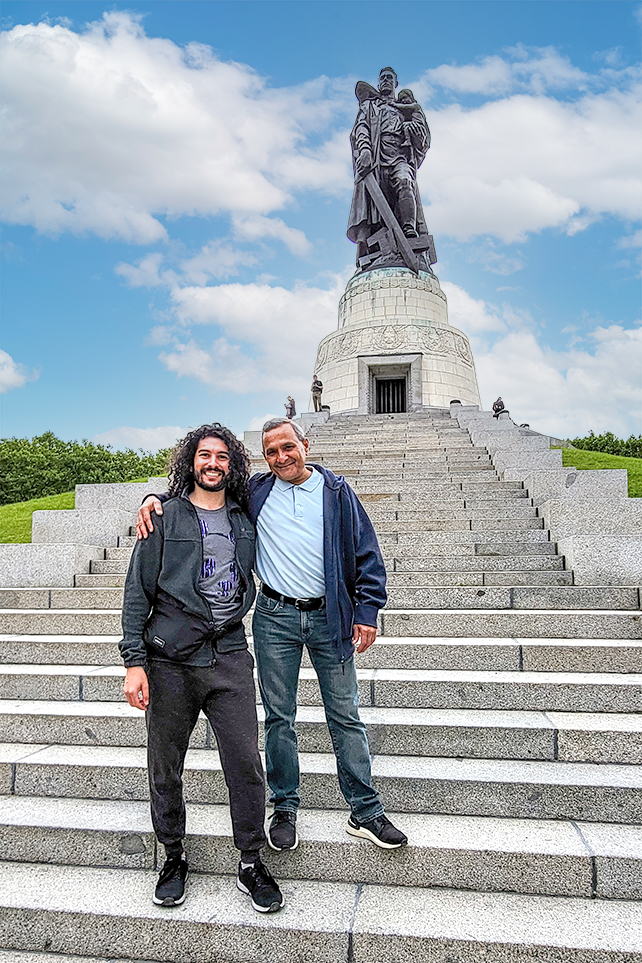
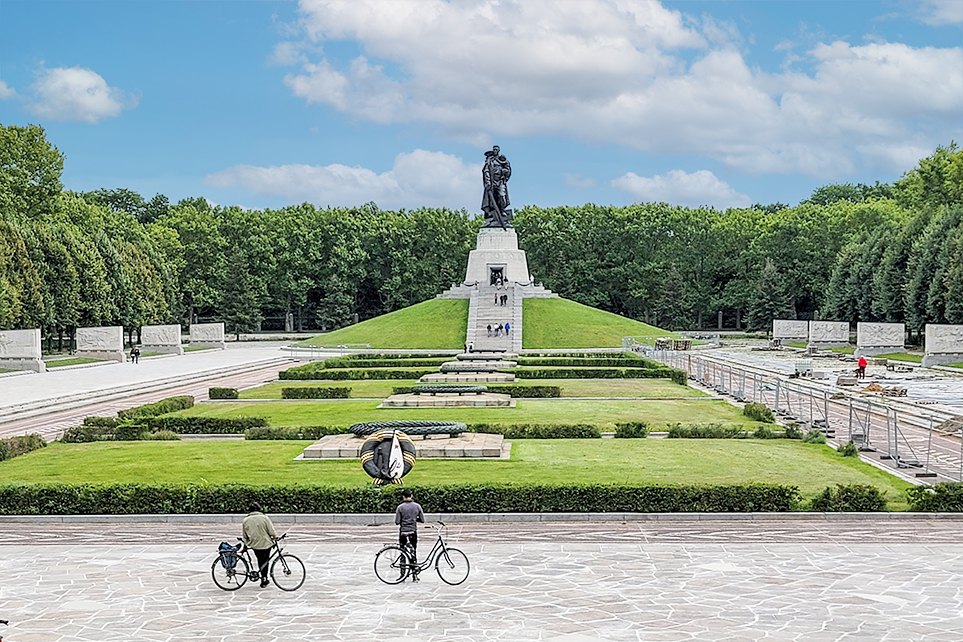
Alexanderplatz
The largest square in the city, Alexanderplatz, is where you will find shops, restaurants, a movie theater, and the iconic Berlin T.V. Tower.
Alexanderplatz is in many TV scenes and movies. Located in the center of the plaza is one of Germany’s tallest structures, the Berlin T.V. Tower.
This symbolic building is what remains at the height of the GDR during 1969. Soaring 368 meters into the sky, it is one of the most visited sites in the city.
I highly recommend you book your ticket in advance online. A visit to the observation deck for 45 minutes is 24.50 EURO. Other options are available.
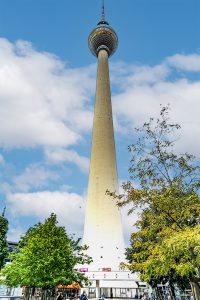
Kaiser Wilhelm Memorial Church
The Kaiser family built this neo-Romantic style church between 1891 and 1895. The church bells were the second biggest in Germany after Cologne.
But then arrived the air raids from WWII in 1943, destroying the main spire, which was broke off, causing the roof to collapse. After the war ended, the Allies decided not to rebuild but leave the church to symbolize the traditions of war.
In 1956 it became a public debate as the city wanted to demolish and rebuild a new church, but the Berliners protested. To compromise, they left the existing damaged church and built the present church, symbolizing a sense of calmness with unique stained-glass inlays within these honeycomb elements creating a blue light.
- There are free guided tours daily. Check out the Kaiser Wilhelm Memorial church website for the timetables.
- One of Berlin’s biggest Christmas markets is at Breitscheidplatz, next to the church. Unfortunately, that’s also where the terrorist attack of Dec 2016 took place, where you will see Memorial.
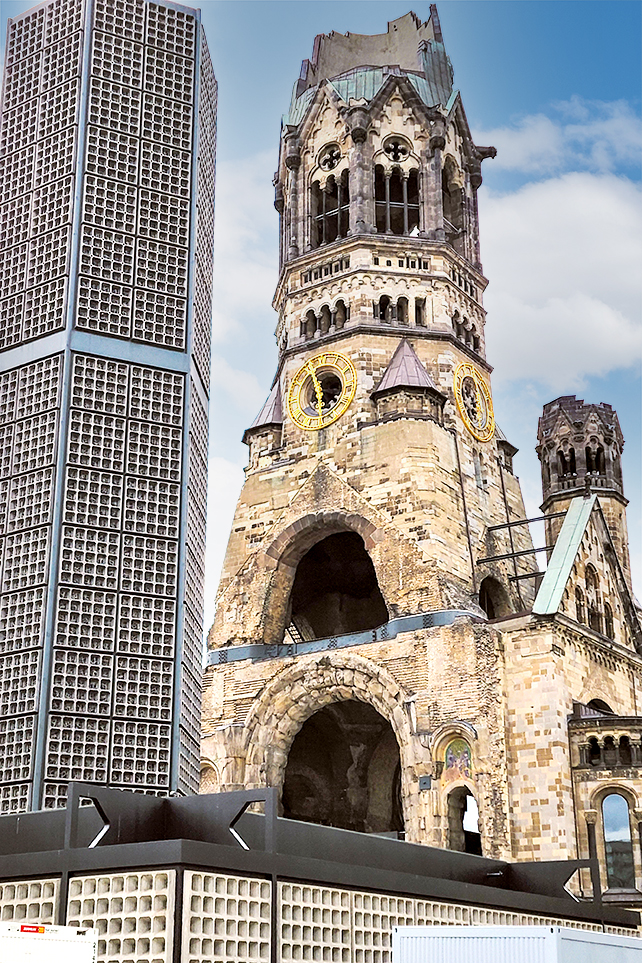
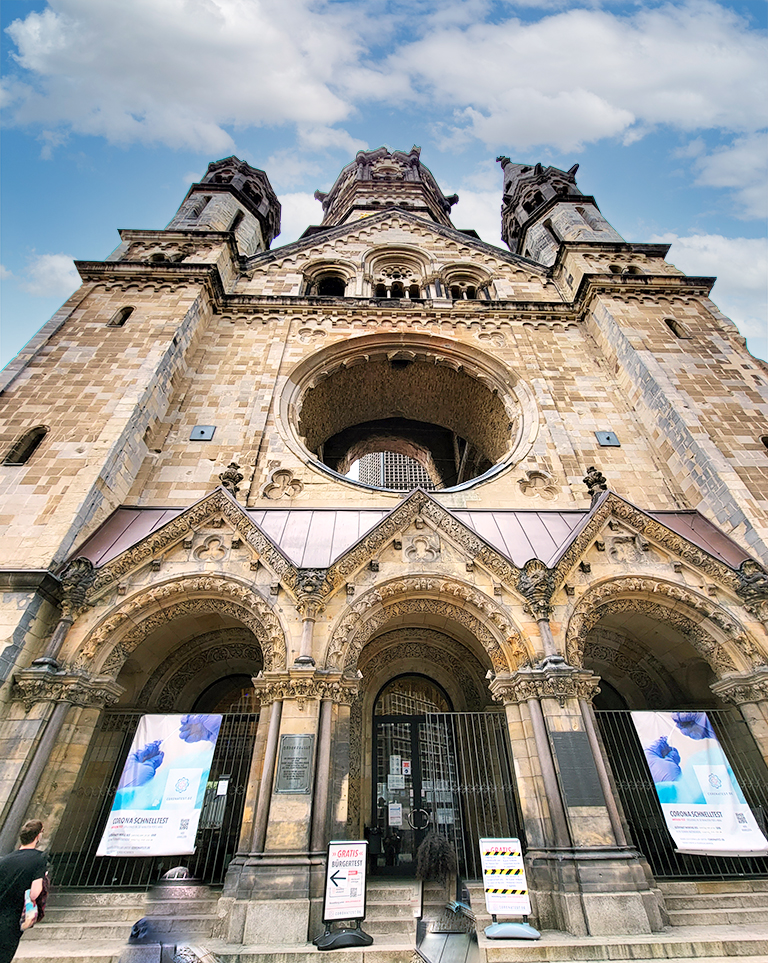
The Neptune Fountain
While near Alexanderplatz, make sure to check out the Neptune Fountain. Built in 1891, the Neptune Fountain is a unique sculpture with the Roman god Neptune in the center, surrounded by four women representing the four main rivers of Prussia: Elbe, Rhine, Vistula, and Oder.
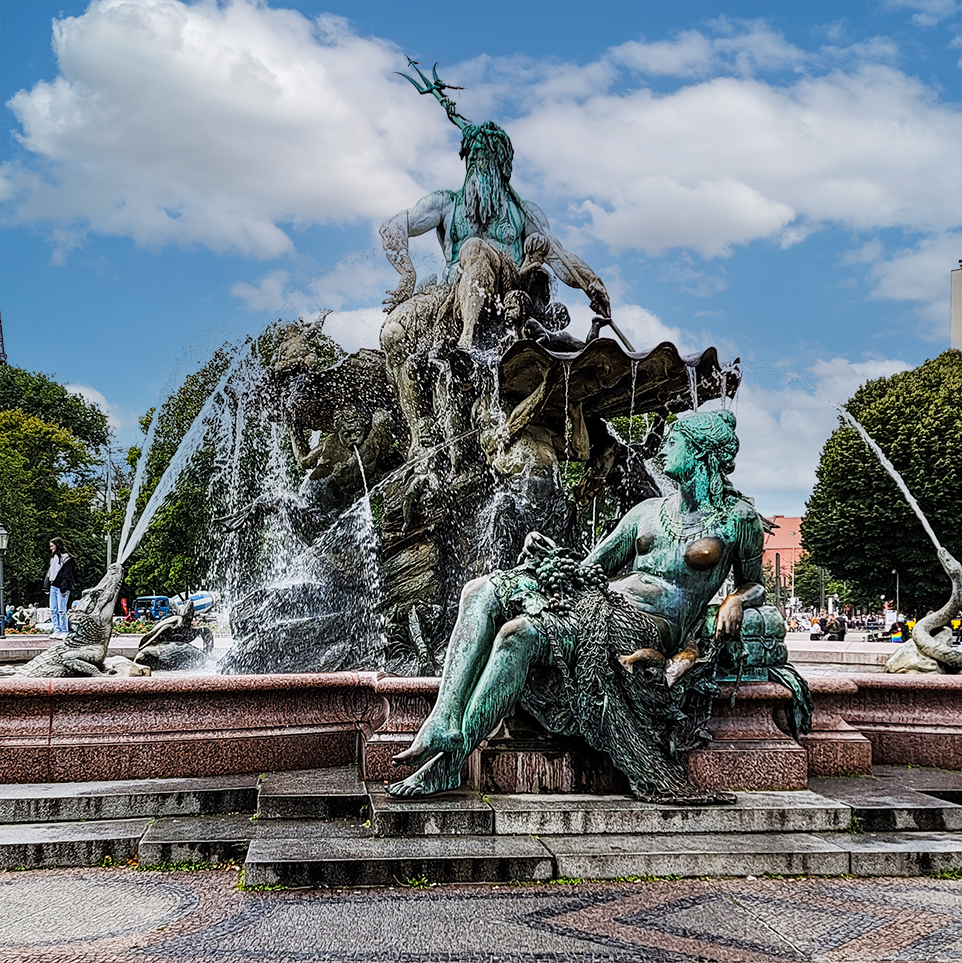
St. Mary’s Church (Marienkirche)
One of the oldest churches in Berlin, St. Mary’s Church, was built between 1250 – 1292. The main attraction is the fresco painting entitled “Dance of Death.” The painting displays the plague in 1484, costing many people their lives.
- Hours: January – March: 10:00 – 16:00, April – December 10:00 – 18:00
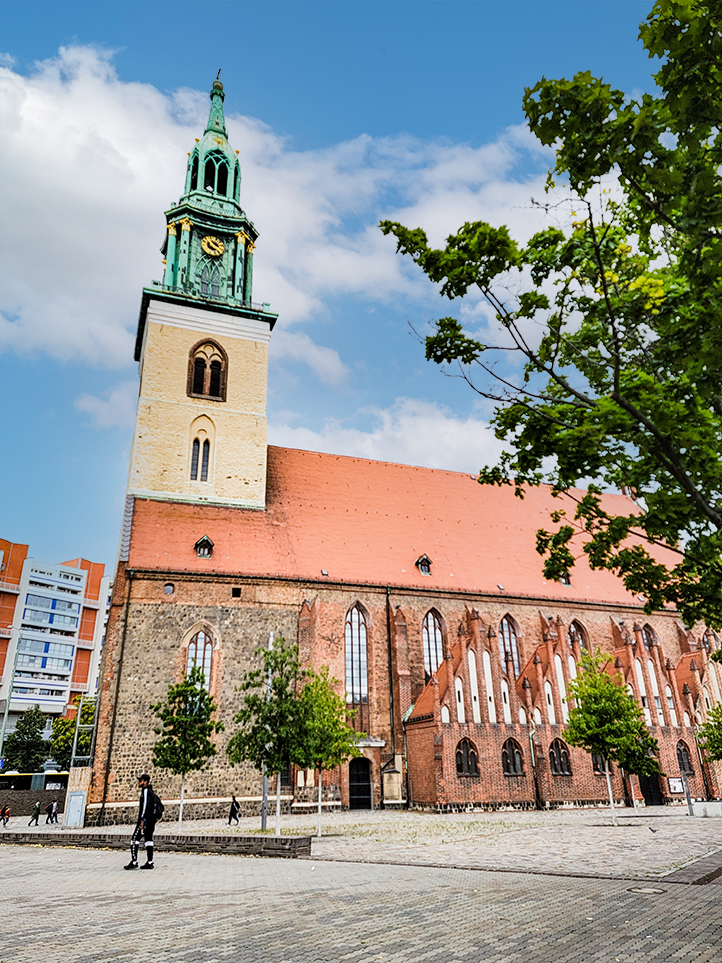
HELPFUL TIPS
- Hop On Hop Off Bus Tours – If you have a short stay in Berlin, I recommend the Hop On Hop Off bus tour. Berlin is a large city. This will save your legs from a lot of walking. Many companies throughout the city offer this service, and you can bargain at the ticket office.
- If you plan to get around the city by public transportation, get a Berlin WelcomeCard. The card allows you to travel on public transport at a discounted rate.
ACCOMMODATION
Berlin has it all, from small hostels and Airbnb accommodations to deluxe hotels.
- TripAdvisor is an excellent place to start searching for a hotel as you can read reviews and amenities offered at hotels.
- Hotels.com is an excellent website to book your hotel and research details about hotel amenities.
- If you prefer a smaller boutique type accommodation, search Airbnb.
Enjoy your travels! Please read my blogs about other exciting places around the world at Traveling Lens Photography.
If you want to read more follow me on Facebook, Instagram, or Pinterest as I share my journey.
Happy Travels!




